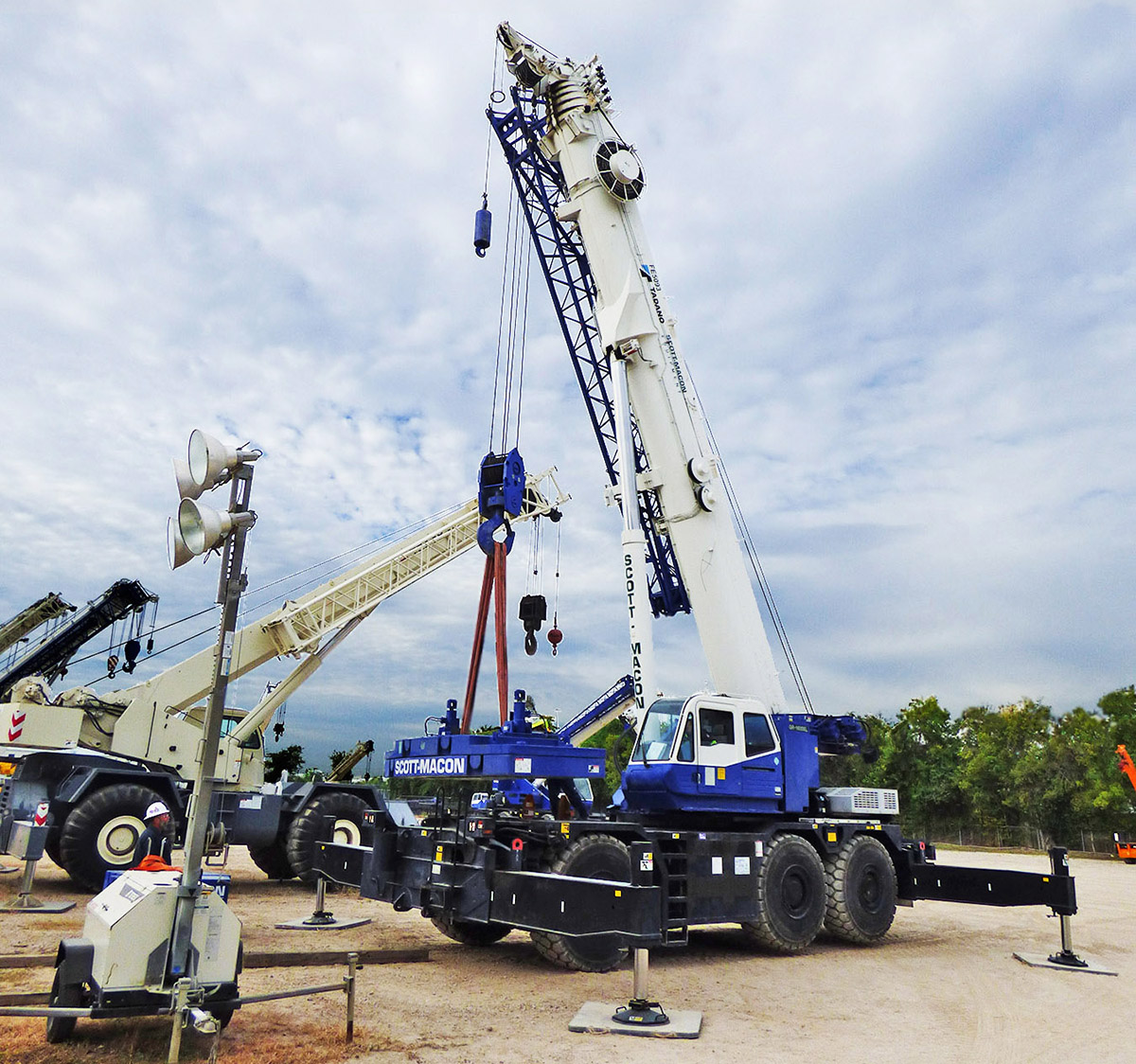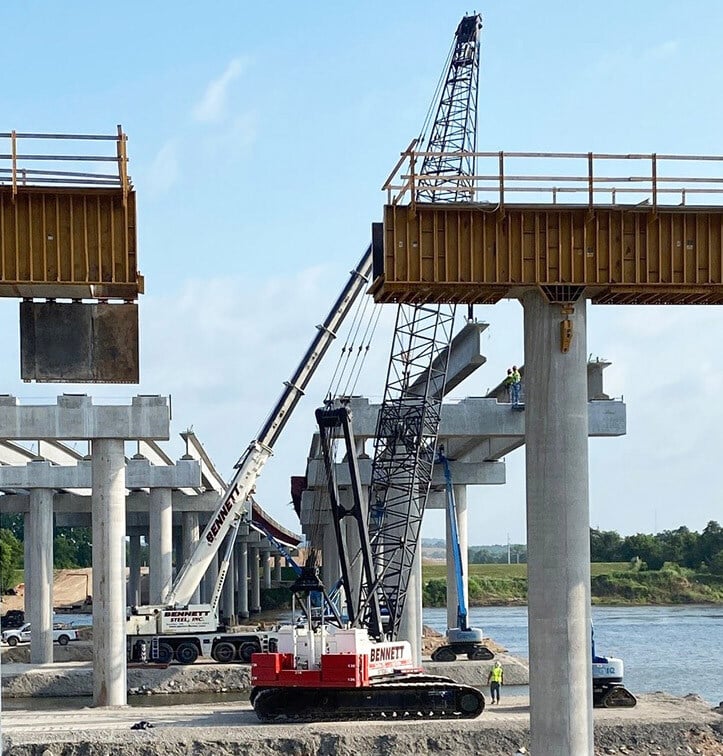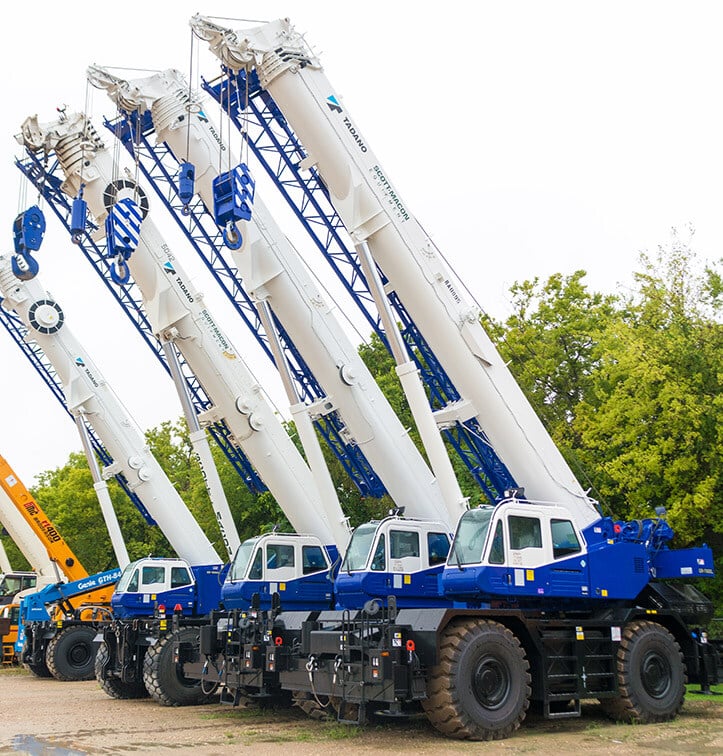Severe weather can be a major concern for operating heavy equipment, but it is of particular concern for crane operation. Operating cranes safely under normal conditions requires highly skilled operators with a safety mindset. When severe weather rolls in, this adds additional issues that can have an impact on operating the crane safely at the job site.
High Winds
High winds can have a big effect on crane safety. Dangerous winds can swing the load, reduce the crane's stability and possibly cause the crane to tip over, which can result in injury or even death. It is best to avoid operating cranes in winds stronger than 20 miles per hour. Be sure to keep in mind that the higher the crane will be lifting the load, the higher the wind speed is likely to be. Load drift, load spin, swinging the boom and holding the load in place are all factors the operator should adjust for and work to control in high winds. As you operate the crane in windy conditions, pay attention to how the wind affects the crane at any given moment. Operating close to capacity in high winds may induce stresses on the crane that surpass the structural integrity of the equipment, which can cause an overloading situation. Also, be aware that when you are operating a crane in between two buildings, wind speeds can be even higher in those areas. Even a slight wind can make it challenging for an operator to keep a load steady, so it’s important to adjust accordingly and take the necessary precautions. Refer to the crane manufacturer’s spec sheets and load charts for information on the acceptable wind tolerances, especially when conducting an important lift. Critical lifts should not be attempted during any high wind conditions.
High Temperatures
High environmental temperatures can have a negative effect on a crane as well. If the temperature is too hot, the engine can potentially overheat or fail due to a variety of factors. Heat may also decrease the effectiveness of your crane’s hydraulic system. Hydraulic pump pressures may begin to fall off as the hydraulic oil temperature gets too hot. A good hot weather pre-operation check should include checking all crane fluid levels, including engine coolant, and close inspection of all seals and hoses for seepage leaks caused by effects of the heat. A related problem is the dust that occurs in hot, dry areas. If you don’t clean and maintain your crane’s filters, dust and dirt can cause serious issues. Therefore, it is important to clean and lubricate your crane regularly to keep it running properly. Extremely hot conditions can also affect the crane operator and their ability to operate the crane safely. If the cabin temperature gets too high, the operator can begin to suffer from dehydration and possibly heat exhaustion. Having a fully functioning air conditioner on the crane is helpful along with the operator maintaining proper hydration and scheduling regular breaks.
Low Temperatures
If the environmental temperature is too cold, a crane’s hydraulic system can slow down from reduced fluid speed due to thickening of the hydraulic oil. In addition, extreme cold can reduce the crane’s structural tensile strength and can even cause it to fail. Because of this, you should reduce your load weight by 25% in subzero temperatures. If the weather is colder than -20° F, reduce the load weight by 40%. Also, if the weather is cold enough, steel can become dangerously brittle. When this happens, the capacity of a crane’s hoist equipment is lowered. Extreme cold can even have an effect on the operator. Cold stress can happen when the body cools down faster than it can warm up, which can cause disorientation, numbness, frostbite and hypothermia. This may be especially dangerous to operators working in high places as it could be hard to get back to the ground for treatment if it progresses too far. Keep in mind that extremely cold temperatures along with snow and ice are dangerous conditions to operate a crane especially when the job site becomes slippery and unstable.
Lightning Strikes
Lightning strikes can severely injure or kill workers. A lightning strike can knock out the crane’s electrical systems, causing total power failure, and possibly affect the safety systems. Damage to the crane’s LMI or anti-two-block systems can potentially cause a loss of load or the crane’s operation to become erratic. As soon as you hear thunder or notice any lightning, telescope in and/or lower the boom if possible and turn off the electrical system. During a lightning storm, it is especially hazardous when entering or leaving the crane. When storms produce lightning, being in and around a crane can be a serious safety concern. Since cranes are made of metal with booms that are generally high in the air, they act as a lightning rod. This is especially true when the crane is the highest structure in the area. In addition, other workers whose jobs require them to be near cranes on the job site can have significant risk from a lightning strike. You need to make sure that you and all your coworkers take shelter far away from the crane. Keep in mind that lightning is very unpredictable and can strike outside rainfall areas or even up to 10 miles from any rainfall. It is recommended to remain out of the crane until 30 minutes after hearing the last sound of thunder. Once it is safe to continue working, do a thorough inspection of the crane to check for possible damage.
Be Prepared, Be Safe
Operating a crane can be dangerous under regular conditions. When extreme weather occurs, the potential hazards multiply. Keeping weather conditions in mind is an important part of safely operating a crane. Prior to beginning any work outdoors, employers and supervisors should check weather reports for all weather hazards. OSHA recommends that employers consider rescheduling jobs to avoid workers being caught in hazardous weather conditions. Supervisors and workers should continuously monitor weather conditions. This includes keeping watch for darkening clouds and increasing wind speeds, which can indicate developing thunderstorms. Pay close attention to local television, radio and internet weather reports, forecasts and emergency notifications regarding severe weather. Mitigating these risks is the best way to remain safe on the job site. Evaluating the weather conditions and making an educated decision on whether it is safe to continue working or if work should be discontinued is a good way to maintain crane safety. You can also consult the crane’s safety manual, read additional safety articles and even take crane safety courses to ensure you have the knowledge you need to keep yourself safe on the job.
For additional articles, click here: Blog | Scott-Macon Equipment (smequipment.com)

.jpg)










Comment